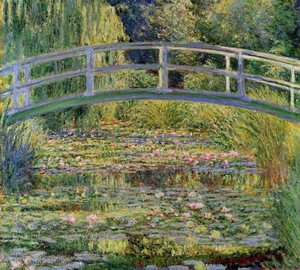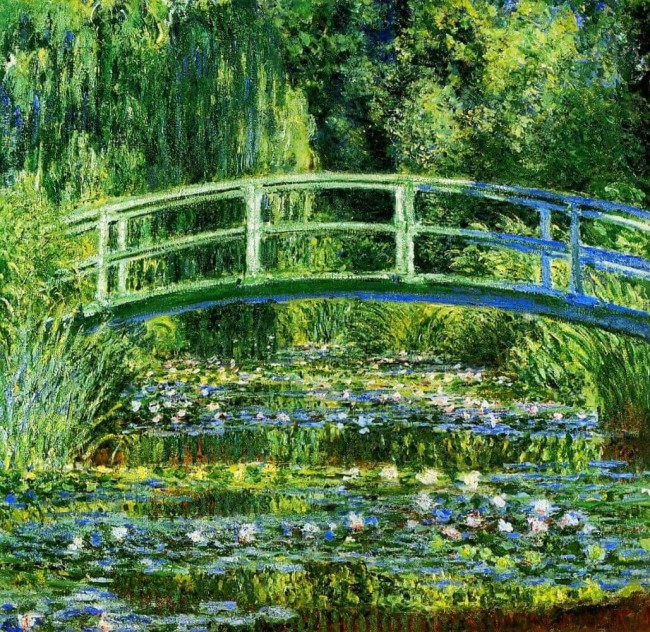
Description of the picture:
Pond with water lilies – Claude Monet. Oil on Canvas, 90.5 x 89.7 cm
This is a work in style ""impressionism"" refers to the late work of the artist. In 1883, Claude Monet acquired a house in the town of Giverny in Northern Normandy. Having bought a neighboring piece of land, the artist created in his place a picturesque garden with flowers, exotic trees, a pond with water lilies and a Japanese-style bridge. In this shady mysterious corner, Monet wrote a series of paintings with water lilies for 30 years.
Thanks to the successful exhibition of Monet’s works, organized by the patron of the Impressionists Paul Durant-Ruel in Paris in 1909, the artist’s paintings from this series quickly sold out. Including Americans, who showed great interest in the Impressionists.

Claude Monet preferred to draw from life, tracking the play of sunlight on the smooth surface of the pond. He could write the same look in different weather and time conditions, tracking the emotional reaction to nature. Therefore, he often worked on several subjects at once. So, he has a whole series of paintings with a pond and a Japanese bridge, written in a different manner.
Monet applied large strokes to the canvas. He used clean paints, mixing them on the canvas.
The picture is painted in blue and green and makes a pacifying impression. This palette is diluted with white-pink blotches of water lilies on the water. The picture is built on the contrast of light and shadow. The artist uses many shades of green, blue, yellow.
In the foreground we see the overgrown expanse of the pond. The sedge and trees that grow on the shore are reflected in the water. They are visible in the background. An elegant Hokusai-style bridge visually divides the canvas into two parts. At its bottom, a reflex from water is reflected. He is in the shade, and lit by the sun at the same time. The bridge recalls the presence of man in this idyllic picture. I want to walk along it, stand in the middle and enjoy the view.
The water surface creates a perspective, diverting the look to the background. Thick trees create the depth there. Also, the pond and thickets of water lilies give a horizontal feeling, which repeats the arc of the bridge. And trees with grass push space upwards with their vertical lines. This contrast is repeated in the reflection on the water – between large blocks of horizontal water lilies, the artist writes with small vertical strokes the reflection of trees and grass in the water. Thanks to this technique, the picture feels spacious, and there is a feeling of air, despite its small size.
Numerous water lilies are depicted in white, pink, and blue strokes. They bring a sense of life to the picture. The artist managed to convey a sense of peace and silence. Looking at the canvas, you hear birds chirping and buzzing bugs. Feel the light breeze and the warmth of the sun. The picture leaves the effect of full presence. The world in the absence of man lives his fulfilled life.
This painting is stored in the Art Museum of Princeton University. Her museum was donated by the heirs of the long-time trustee of the school, William Church Osborne in 1972."